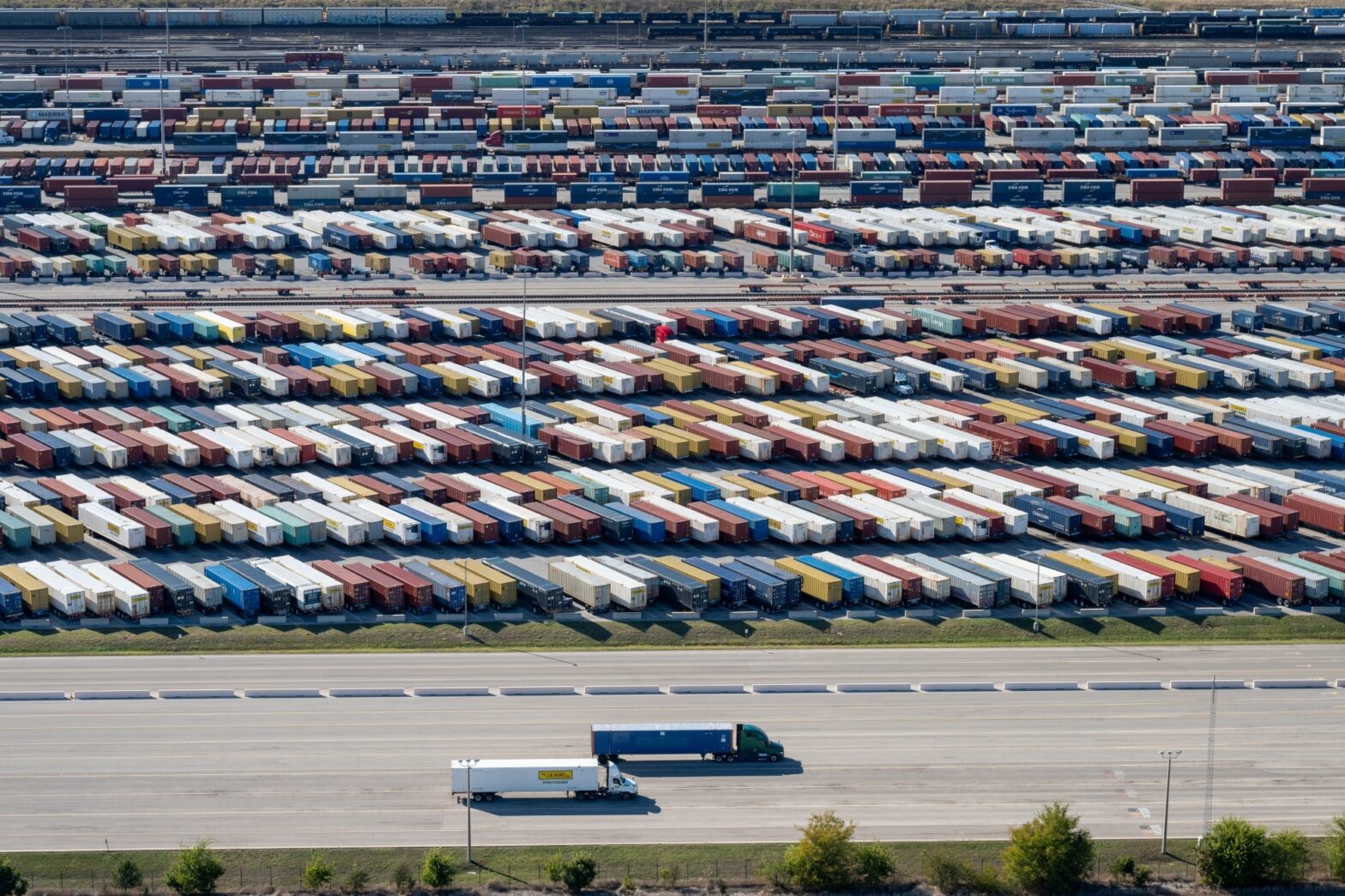Spanning nearly 1,400 acres, the district gives companies the right to deploy semi- and fully autonomous vehicles along roadways in the freight corridor, supporting next-generation logistics and automation. Regulatory barriers and heavy-haul freight permits have also been eased to save costs, enhance connectivity, and improve efficiency.
Dallas-based Hillwood, BNSF Railway, and the city of Fort Worth have announced the creation of the Alliance Logistics District, a “first-of-its-kind” mobility logistics hub within the Smart Port at AllianceTexas, Hillwood’s 27,000-acre, master-planned, mixed-use development in north Fort Worth.
The district—which was officially designated and approved by the Fort Worth City Council on Nov. 11—is designed to deliver tangible operational advantages to any operator or customer within its boundaries, Hillwood said.
From autonomous vehicles to next-gen automation
The district’s benefits include the right to deploy semi- and fully autonomous vehicles along district roadways in the freight corridor, supporting next-generation logistics and automation.
There is now also a right to use private hostler vehicles without a commercial driver’s license (CDL) to shuttle freight between BNSF’s intermodal facility and district warehouses, increasing operational efficiencies and reducing regulatory barriers, Hillwood said.
In addition, heavy-haul freight movements with loads over 80,000 pounds can now be performed across the district’s roadways without the need for special-use permits, enabling efficient transport of high-density or oversized goods.
By being co-located with one of BNSF’s largest intermodal facilities, operators and customers “can realize significant operational cost savings, enhanced connectivity and improved logistics efficiency,” Hillwood said.
Anchored by North America’s largest inland rail port
Spanning nearly 1,400 acres, the Alliance Logistics District is anchored by BNSF’s Alliance intermodal facility, North America’s largest inland rail port. The district is “the first of its kind” within BNSF’s rail and intermodal ecosystem, Hillwood said, and will “redefine how freight moves through North Texas while reducing traffic on public roads.”
By enabling more efficient and cost-effective cargo transport, the district aims to help customers save “millions of dollars” annually while solidifying North Texas’ position as a national leader in logistics innovation.
Purpose-built for next-generation industrial development, the district features direct BNSF rail access and flexible logistics infrastructure designed to support manufacturers and shippers handling heavy, dense, or high-value goods—including ceramics, plastics, and auto parts—in a business climate where “speed, efficiency and connectivity are critical,” Hillwood said.
Nicholas Konen, VP of strategic development at Hillwood, said the district “reinforces AllianceTexas’ standing as one of the most connected, forward-thinking logistics ecosystems in the country” by integrating “advanced technology, modern infrastructure, and regulatory flexibility.”
“These advancements reduce costs for customers, improve logistics efficiency and take pressure off public roadways,” Konen added in a statement. “Our long-standing partnerships with BNSF, the city of Fort Worth, and regional transportation leaders are truly a testament to how public-private collaboration sparks innovation, accelerates industrial development and drives economic opportunity.”
Primary port of entry for the Southwest
The inland port at AllianceTexas serves as the “primary port of entry for the southwestern United States,” Hillwood noted, linking global trade directly to the region through intermodal rail connections from ports including Los Angeles, Long Beach, and Houston.
One of only two intermodal logistics hubs in Texas that integrate air, ground and rail transportation, the inland port enables companies to efficiently move goods across all three modes of transit.
Jon Gabriel, BNSF group VP of consumer products, said the district “aligns perfectly with BNSF’s vision to deliver transportation services that consistently meet our customers’ expectations, with these innovations delivering cost savings and additional supply chain value.”
“By enabling the delivery of goods from rail to warehouse in a more efficient way, we’re increasing the traffic that can capitalize on the cost, capacity and sustainability benefits of intermodal while creating a scalable model for the next generation of inland ports,” Gabriel added in a statemet. “This strengthens the region’s freight infrastructure and keeps North Texas at the forefront of global supply chain innovation.”
Texas ports generated $1T in international trade in 2024
Hillwood cited a recently released study by the Texas Comptroller’s office that shows Texas ports generated $1 trillion in international trade in 2024—with AllianceTexas contributing over $834 million of that total. That marks a 550.7% increase since 2016, Hillwood added.
“Through this public-private partnership, Fort Worth continues to lead in smart, sustainable infrastructure that drives our region’s economic vitality,” said Lauren Prieur, Fort Worth’s director of transportation and public works. “The Alliance Logistics District strengthens our position as a global logistics hub while ensuring forward-looking, responsible transportation planning.”
Hillwood’s $20M bridge investment to boost district
Along with the new district’s operational enhancements, Hillwood is making a $20 million investment in a new private heavy-haul bridge over FM-156, saying it will “unlock the district’s true value” by directly linking its 15 million square feet of distribution, logistics, and manufacturing space to BNSF’s Alliance intermodal facility.
Designed to meet TxDOT standards and engineered for 120,000-pound axle loads, the three-lane bridge will enable the efficient movement of heavy-haul freight while reducing truck traffic on public roads, Hillwood said. Construction is slated to be completed by late 2026, the company said.
